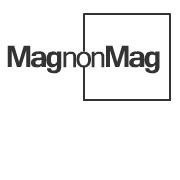MagNonMag - Magnetic order induced in nonmagnetic solids

The aim of the MagNonMag project is to establish a long-lasting collaboration in the frames of a research program the goal of which is to develop novel methods of control and manipulation of the magnetic degree of freedom in nominally nonmagnetic materials, in view of their potential for nanoscience and nanotechnology.
The principal objective of the this project is to bring together leading research groups in the field of nanomagnetism and establish an interdisciplinary training ground for both early-stage researchers and experienced researches, enhancing information partnership between theoretical and experimental research groups working in physics, chemistry, material science, and nanotechnology.
The project is focused on nanomagnetism – magnetism shown by some materials on the nanoscale even if magnetically inert in the bulk – a novel physical effect with a potential for the emerging spintronics technology. The MagNonMag project will study the possibility to control magnetism by various means such as introducing sp impurities and defects in nonmagnetic materials through ion bombardment, fluorination, and transmutation doping.
The objects under investigation are IV group elements with the emphasis on graphite/graphene systems. Induced magnetism phenomena studied in this project have the potential to provide new effects and functionalities which are highly desirable and of great technological and economical relevance. The synergy of the scientific strength of the Russian Academy Institutes with the technological and analytical potential in the research groups in EU (Sweden, Spain, and Italy) and Australia provides a valuable opportunity to study and understand novel phenomena of induced nanomagnetism which is promising for nanotechnology applications.
- Lappeenrannan Teknillinen Yliopsisto - Finland (Coordinator)
- UMEA Universitet - Sweden
- CIC nanoGUNE - Spain
- UNIVERSITA DEGLI STUDI DI PARMA - Italy
